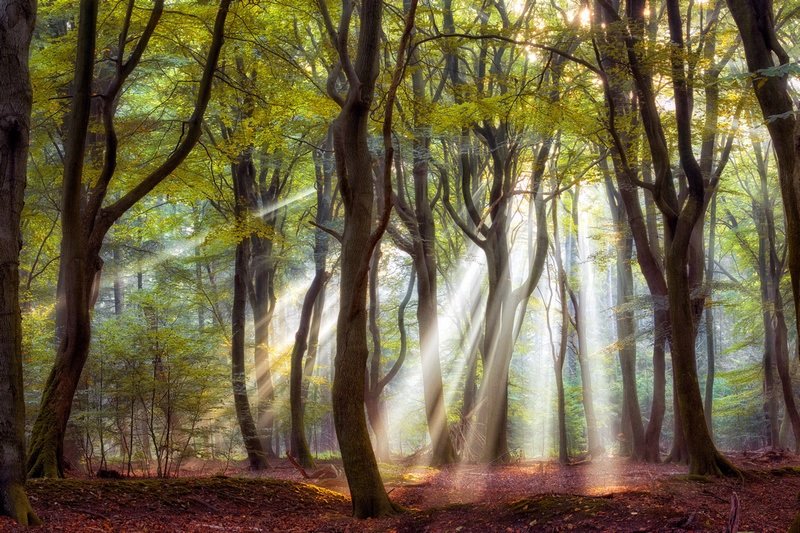
How can Sheffield heal divisions over the tree-felling controversy?
17th December 2016
Trees, forests, woodlands…and nemus?
30th August 2017Komorebi (木漏れ日): Sunshine filtering through the trees.

There is a Japanese term “Komorebi”, for which no simple English translation exists. Yet it is a distinct phenomenon, that anyone who spends time among trees will have enjoyed. Komorebi roughly translates as “the scattered light that filters through when sunlight shines through trees”. It is made up of three “Kanji” or Chinese characters: “tree” or “trees”, “leaking-through” or “escape”, and “light” or “sun”.
Komorebi is especially noticeable when the sun is low, and mist or smoke can add to the effect. The impact of Komorebi to the observer can range from creating a pleasant ambiance for a walk through the woods, to generating feelings of awe – which in the right place at the right time – verges on the transcendental. As an arboricultural consultant, I spend more time than most looking at trees when undertaking tree surveys for planning, and occasional experiences of Komorebi have caught me unaware, and have momentarily transformed the most uninspiring trees in development sites, into something special.
No comparable English word for this “tree-light” exists. While the English language has “sunbeam” or “dappled light”, these are more general. The scientific term “crepuscular rays”, describes beams of light shining through the environment, which in purely technical terms, is what occurs during Komorebi. However, these terms are not related directly to the effect of light through trees, moreover, they fail to capture the strong aesthetic component involved in Komorebi.
Less technical and more poetical attempts have been made in the English language to capture the event. Without a suitable term, several poets and authors felt compelled to invent their own words:
Dylan Thomas called it “windfall light”, in his poem “Fern Hill”, writing:
And once below a time I lordly had the trees and leaves
Trail with daisies and barley
Down the rivers of the windfall light.
The poet Gerard Manley Hopkins created the term “shivelight” for: “the lances of sunshine that pierce the canopy of a wood”’.
The author C.S. Lewis was a fan of these “shafts of delicious sunlight” or “Godlight”, writing: “Any patch of sunlight in a wood will show you something about the sun which you could never get from reading books on astronomy. These pure and spontaneous pleasures are patches of Godlight in the woods of our experience.”
Despite their efforts, none of these words have caught on. Komorebi, like several similar terms, highlights the influence of nature and aesthetics that is unique to Japanese culture. Perhaps, beyond poets and physicists, there is no need for an English equivalent. The experience – of observing sunlight through trees – might be enough. Indeed, the absence of a comparable word allows respite from the taxonomic rumination that occurs in most other aspects of life, helping Komorebi remain as one of life’s “pure and spontaneous pleasures”.
Photos by the excellent Lars van de Goor








6 Comments
KAMUREBI, a beautiful concept!
Do we have in theEnglishl language something similar, a concept describing a phenomena we perceive in nature?
it is called dapple, the light coming through from the trees in between
I chanced upon your blog recently. I thoroughly enjoyed this post!
Absolutely lovely! I was walking through a nature trail earlier today and felt that transcendental experience, so I wanted to see if others felt the same. Nice to know others feel this deep connection when out in nature. 🙂 Thank you for a wonderfully written article!
Hi Rebecca. Many thanks for the comment. Glad you enjoyed the blog post and are enjoying Komorebi! Adam
Godlight indeed! Thank you for the lovely walk in the dappled woods of your mind!